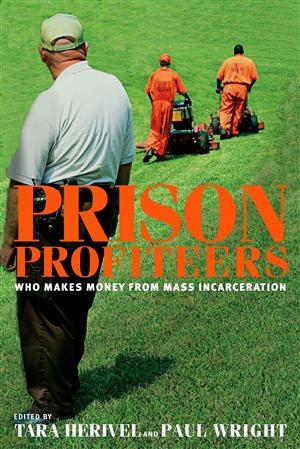Fourth Circuit Announces Counterman v. Colorado Is New Rule of Constitutional Law That Applies Retroactively to Cases on Collateral Review and Grants Authorization to File Successive § 2255 Motion
The United States Court of Appeals for the Fourth Circuit granted Scott Lewis Rendelman’s motion for authorization to file a successive 28 U.S.C. § 2255 motion based on the holding of the Supreme Court of the United States (“SCOTUS”) in Counterman v. Colorado, 600 U.S. 66 (2023), that the Government must “prove—in true-threat cases—that the defendant was subjectively aware of the threatening nature of his statements.”
Background
In 1986, while Rendelman was serving a state prison sentence for embezzlement, he was raped by his cellmate. Rendelman then sent threatening letters to the people involved with his embezzlement case, which resulted in Rendelman serving time in federal custody where he was raped four more times. This set into motion a “campaign” by Rendelman of writing letters to federal judges and public officials, threatening bodily harm, “for as long as he remained incarcerated” to show that imprisonment failed to “achieve the government’s goal of rehabilitating [Rendelman] to a crime free life.”
Rendelman was finally released in 2001 after serving his state and federal sentences. But he was arrested again in 2005 on an outstanding warrant stemming from a threatening letter he sent to a Maryland judge while incarcerated. While incarcerated on that charge, Rendelman wrote letters threatening bodily harm to a state court judge, a state prosecutor, a local attorney, the U.S. President, and White House employees, explaining in one letter: “I write the letters as my way of demonstrating to the officials that this is not the way you treat someone if you are trying to achieve a positive result.” Rendelman was indicted on six counts of mailing threatening communications in violation of 18 U.S.C. § 876(c).
At trial, Rendelman represented himself and wanted to present a defense that the letters were not threats but were merely “protests.” But the U.S. District Court for the District of Maryland explained that “[i]t is not what is in Mr. Rendelman’s mind that is relevant. It’s what a reasonable person receiving the communication would believe it to be….” The District Court instructed the jury, in pertinent part: “A statement is a threat if it was made under such circumstances that a reasonable person hearing or reading the statement would understand it as a serious expression of intent to inflict injury.”
The jury convicted Rendelman on all counts, and he was sentenced to 15 years’ imprisonment followed by supervised release. Rendelman’s conviction was affirmed by the Fourth Circuit on direct appeal. His first § 2255 motion was denied by the District Court. The Fourth Circuit declined to authorize him to file a second § 2255 motion.
Then in 2023, SCOTUS decided Counterman, in which it held that in a true-threat prosecution, the Government must prove that the defendant had, at a minimum, a mens rea of recklessness, i.e., the defendant “consciously disregarded a substantial risk that his communications would be viewed as threatening violence.”
After Counterman, Rendelman moved for authorization to file a successive § 2255 motion, arguing he was “unconstitutionally prevented from arguing and introducing evidence to prove his lack of subjective intent to make true threats against the recipients of his letters.”
Analysis
The Court stated that Rendelman’s motion presents two issues: “whether Rendelman has satisfied the gatekeeping requirements in 28 U.S.C. § 2255(h) and whether we require anything more to grant his authorization motion.” It addressed each issue in turn.
First, the Court discussed the § 2255(h) gatekeeping issue, observing that “[a]fter a prisoner has filed an unsuccessful § 2255 motion challenging his conviction, the court of appeals must give authorization for him to file another.” 28 U.S.C. § 2254(h). “To receive authorization, a movant need only ‘make a prima facie showing that his claim satisfies the § 2255(h) gatekeeping test’—in other words, that his claim satisfies either § 2255(h)(1) or (2).” In re Graham, 61 F.4th 433 (4th Cir. 2023). “This prima facie showing is ‘simply a sufficient showing of possible merit to warrant a fuller exploration by the district court,’” according to the Court. In re Williams, 330 F.3d 277 (4th Cir. 2003). A claim satisfies § 2255(h)(2) if it is based on (1) “a new rule of constitutional law” (2) “made retroactive to cases on collateral review by the Supreme Court” (3) “that was previously unavailable” to the movant.
The parties agreed that Rendelman’s Counterman claim satisfies the requirements for a successive motion, and the Court agreed. In Counterman, the defendant argued on appeal that the First Amendment requires the Government to prove he had subjective intent to threaten in order to sustain a conviction in a criminal prosecution for a true threat. SCOTUS agreed, explaining that, while a threat may be considered a true threat “based solely on its objective content” and “true threats of violence fall outside the First Amendment’s protections and can be prosecuted as crimes,” the First Amendment requires in criminal true-threat prosecutions that the “government must prove the defendant had ‘some understanding of his statements’ threatening character.’”
Turning to the present case, the Court concluded that Counterman announced a new rule of constitutional law. “[A] case announces a new rule when it breaks new ground or imposes a new obligation on the [government].” Teague v. Lane, 489 U.S. 288 (1989). While a rule is not new if it was “dictated by precedent existing at the time the defendant’s conviction became final,” a rule is “dictated by precedent” only if it was “apparent to all jurists.” Lambrix v. Singletary, 520 U.S. 518 (1997).
Prior to Counterman, the Court observed that “[c]ourts were divided about … whether the First Amendment requires proof of a defendant’s subjective intent in true-threat cases.” Counterman. The Fourth Circuit had answered the question in the negative in United States v. White, 810 F.3d 212 (4th Cir. 2016), while the Tenth Circuit had answered in the affirmative. United States v. Heineman, 767 F.3d 970 (10th Cir. 2014). And in Counterman, Justices Barrett and Thomas dissented. Thus, the rule announced in Counterman was not “apparent to all reasonable jurists,” so the Court concluded that Counterman announced a new rule.
The Court then turned to the second prong of the § 2255(h)(2) gatekeeping requirement, concluding that Counterman applies retroactively to cases on collateral review because it announced a new substantive rule and not merely a new rule of procedure. Edwards v. Vannoy, 593 U.S. 255 (2021). A substantive rule is one that “alters the range of conduct or the class of persons that the law punishes.” Schriro v. Summerlin, 542 U.S. 348 (2004). In other words, the new rule “places particular conduct or persons covered by the statute beyond the State’s power to punish.” Id. “Such rules generally apply retroactively because they ‘necessarily carry a significant risk that a defendant stands convicted of an act that the law does not make criminal,’” according to the Court. Id. Counterman satisfies that framework because it places the particular conduct of “making communications that are objectively threatening but not subjectively understood by the speaker as threatening ‘beyond the State’s power to punish,’” the Court explained. Id.
As for the third § 2255(h)(2) gatekeeping requirement, the Court stated that Counterman was previously unavailable to Rendelman. The last federal challenge Rendelman filed in connection with his conviction was in 2015—eight years before Counterman was decided in 2023. Thus, the Court concluded that “Rendelman has met the standard for filing a successive motion to challenge his conviction based on this instructional error.”
Turning to the second issue before the Court, the Government argued that satisfying the § 2255(h)(2) gatekeeping requirements alone is insufficient for authorization to file a successive § 2255 motion. It contended that Rendelman must “demonstrate a plausible claim to relief based on the facts of his case” in order to make the required “prima facie showing.”
The Court rejected the Government’s argument and stated that the focus of its inquiry at this stage “must always remain on the § 2255(h) gatekeeping standards.” In re Williams, 330 F.3d 277 (4th Cir. 2003). Thus, the Court reiterated that there “isn’t an additional plausibility requirement” that must be met at this stage.
The Court summarized its analysis as follows: “Counterman is on point. Rendelman was prosecuted for a true-threat offense. The jury wasn’t instructed that the government had to prove beyond a reasonable doubt that he subjectively intended to threaten another, and the government acknowledges that this omission was error. Whether that error warrants relief under § 2255 is a merits question for the district court to decide in the first instance when it considers Rendelman’s § 2255 motion.”
Conclusion
Accordingly, the Court authorized Rendelman to file a successive § 2255 motion. See: In re Rendelman, 129 F.4th 248 (4th Cir. 2025).
As a digital subscriber to Criminal Legal News, you can access full text and downloads for this and other premium content.
Already a subscriber? Login
Related legal case
In re Rendelman
| Year | 2025 |
|---|---|
| Cite | 129 F.4th 248 (4th Cir. 2025) |
| Level | Court of Appeals |
| Appeals Court Edition | F.4th |





